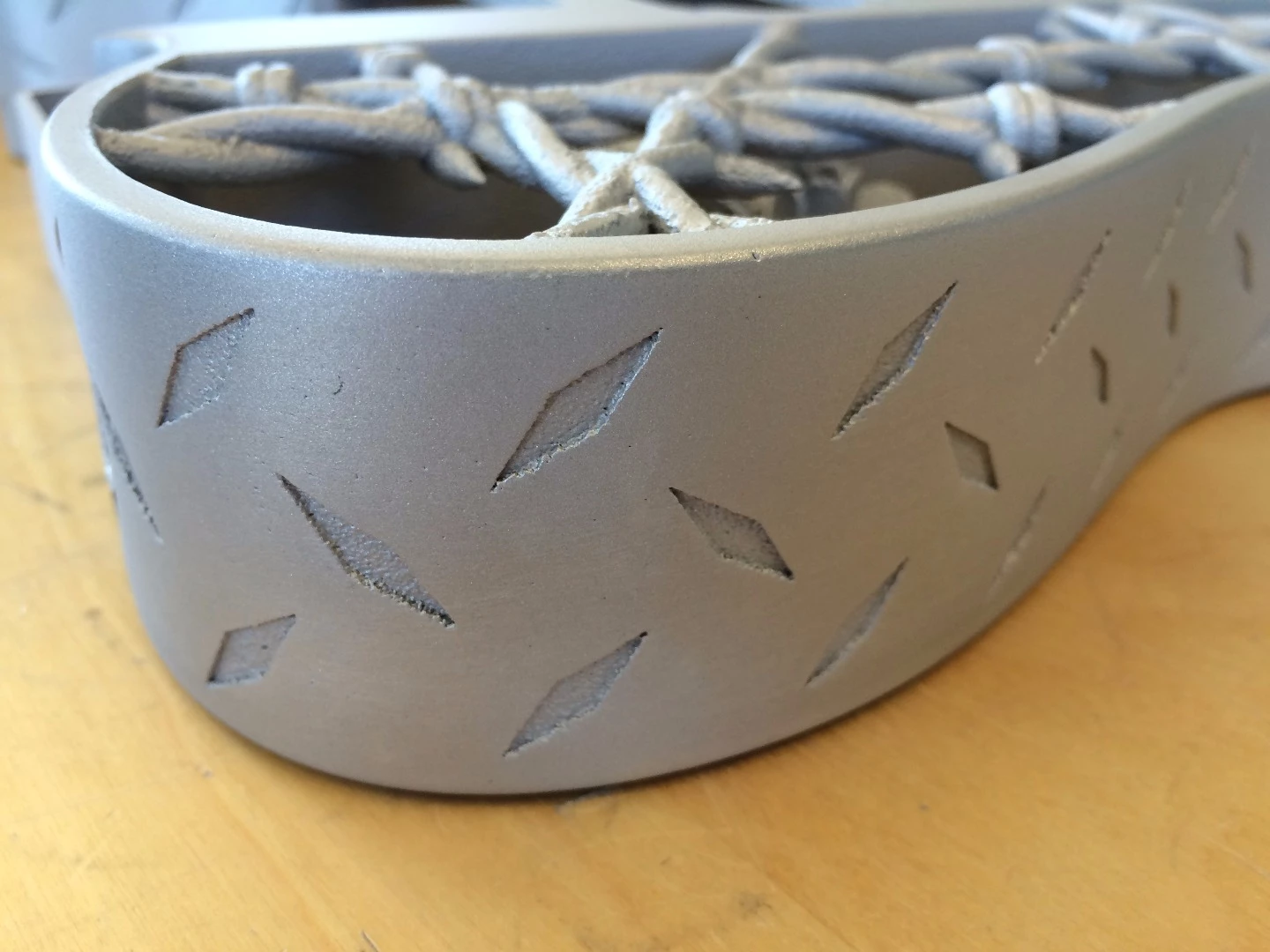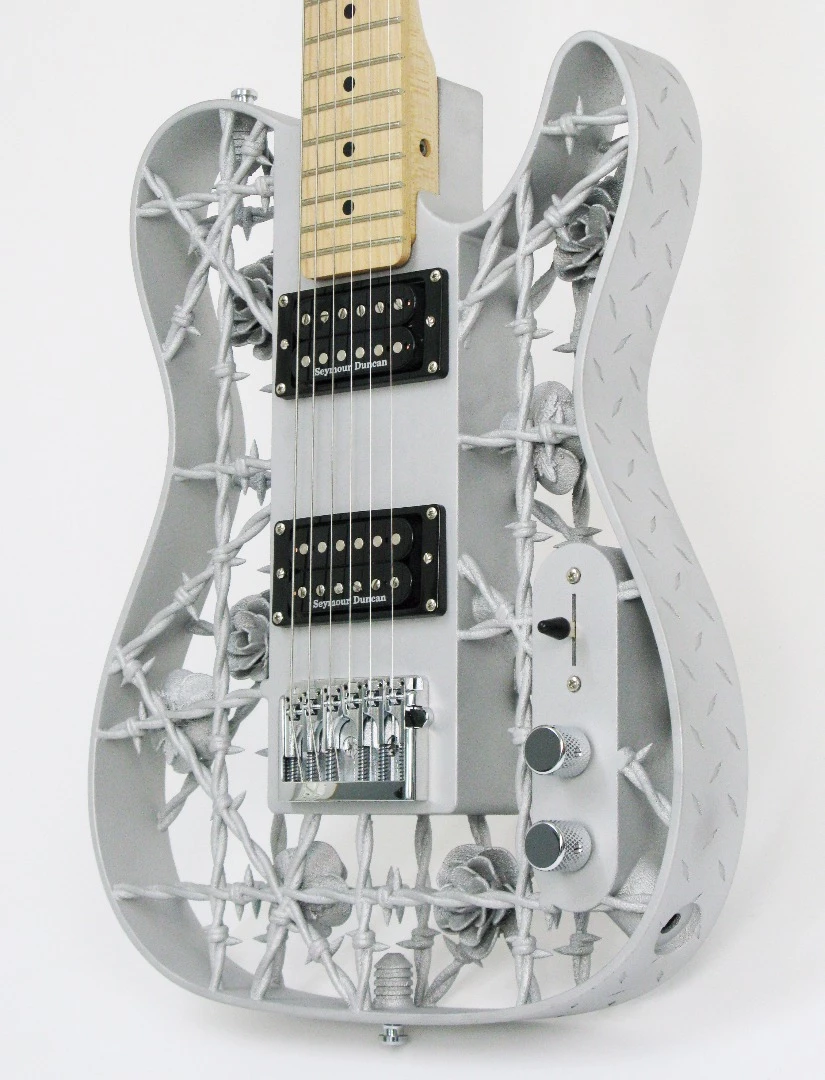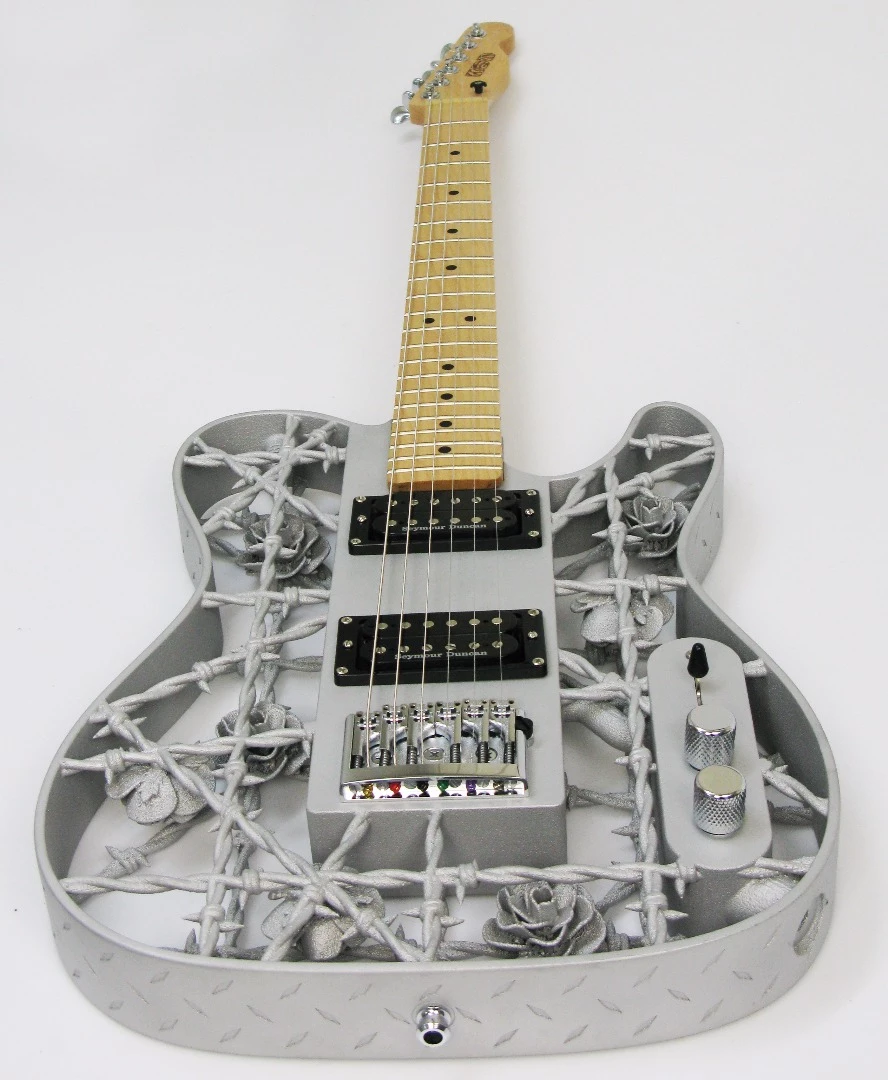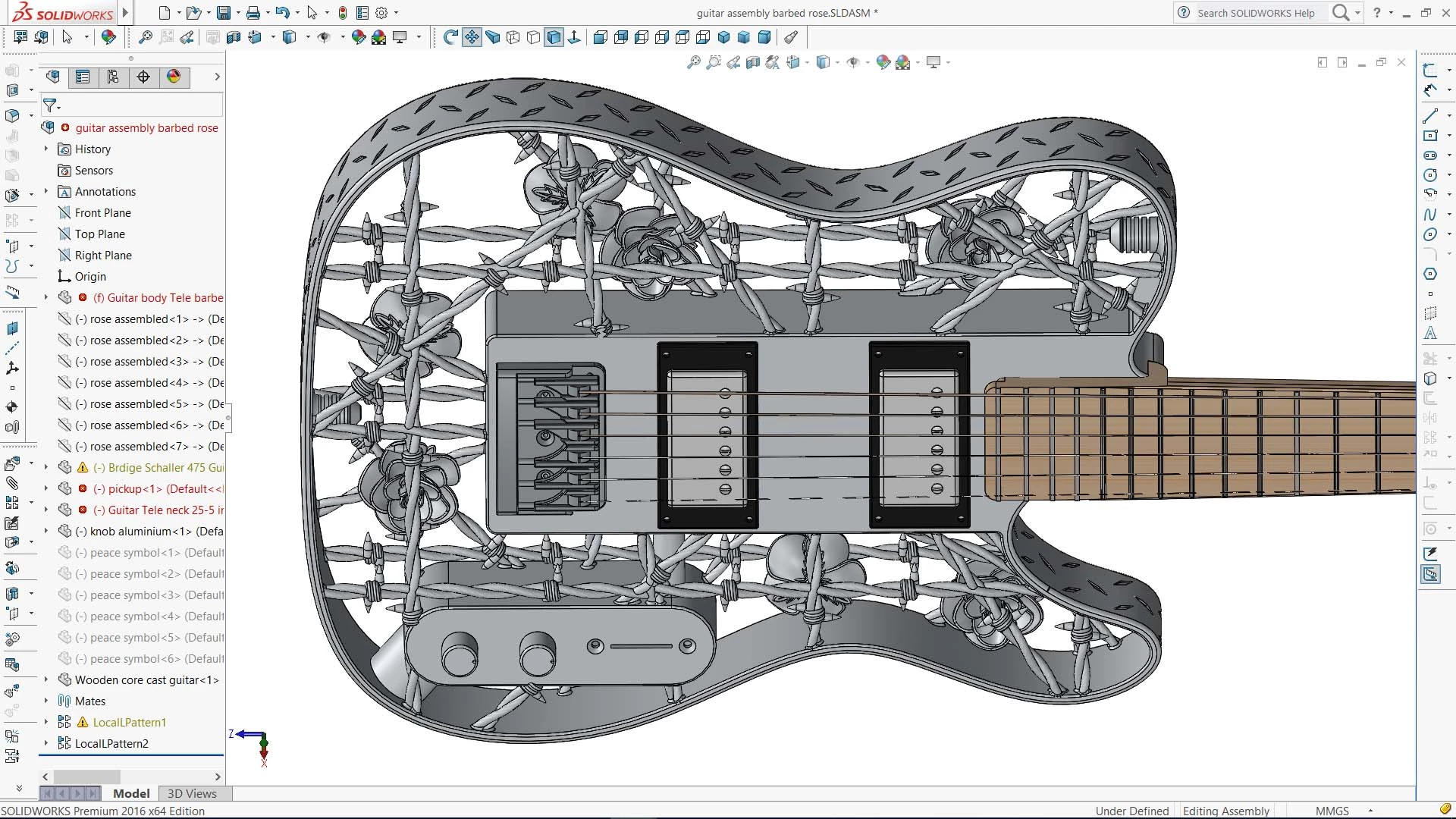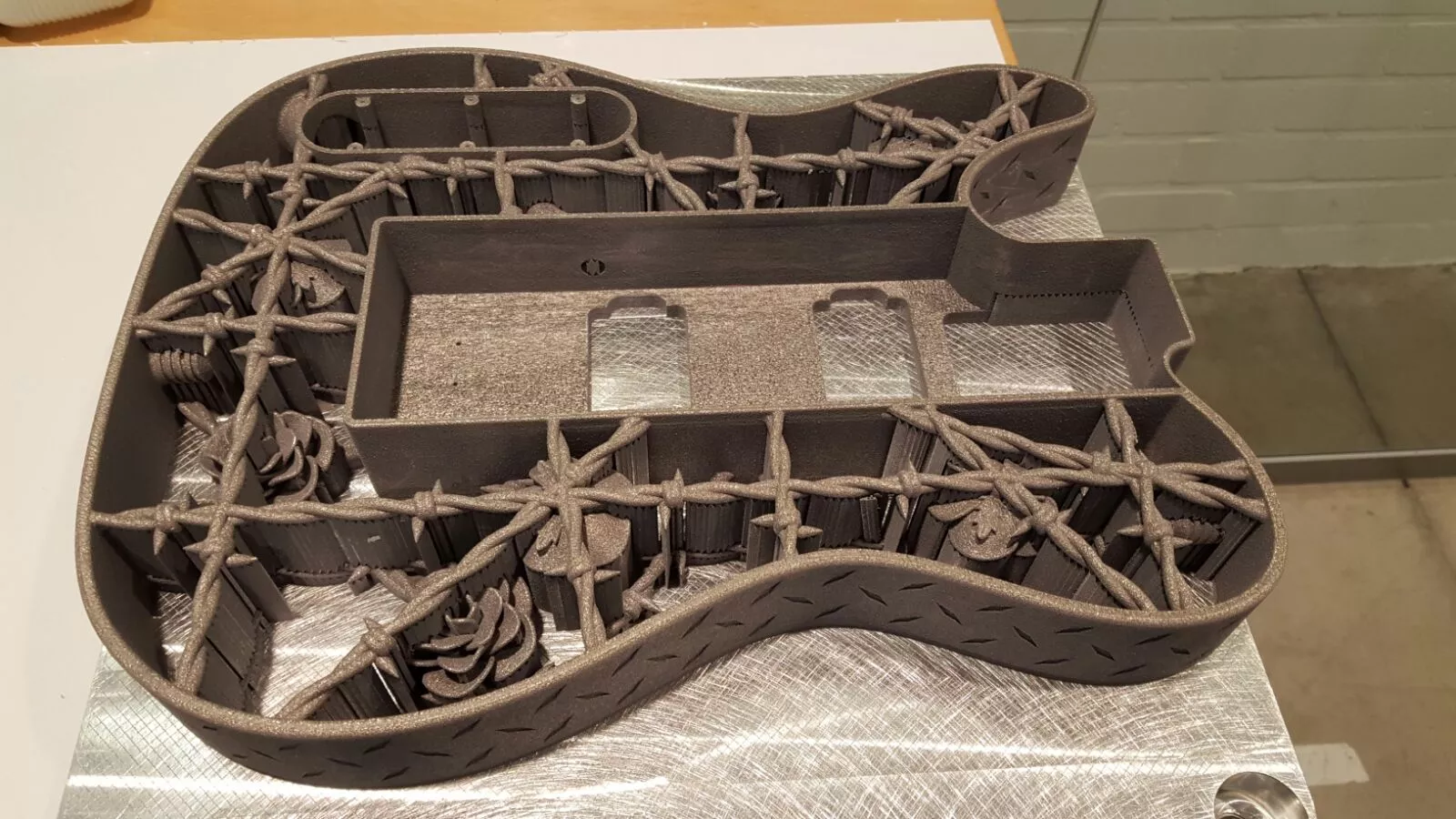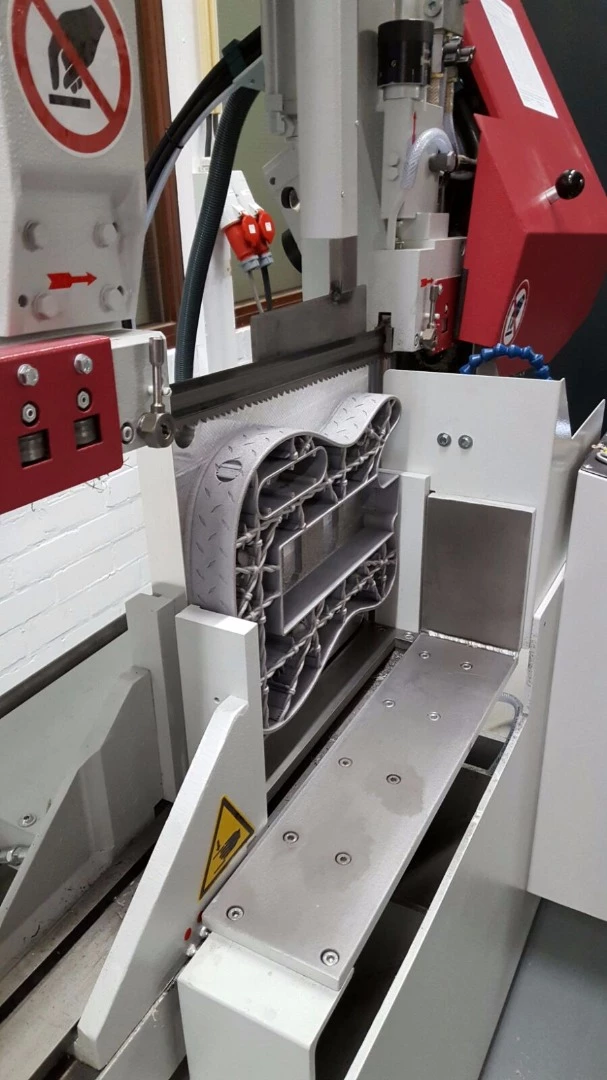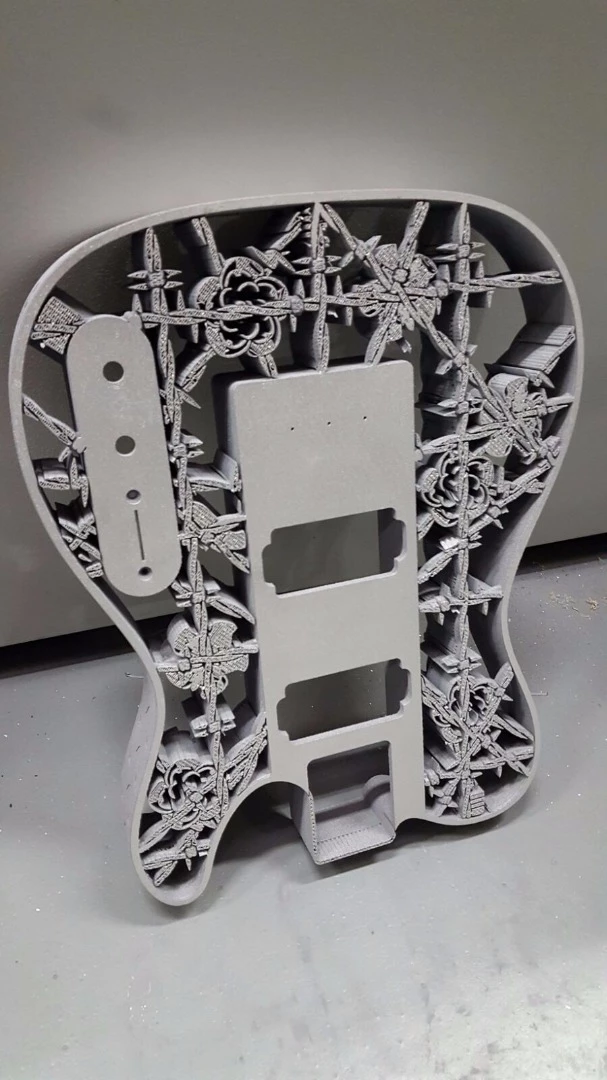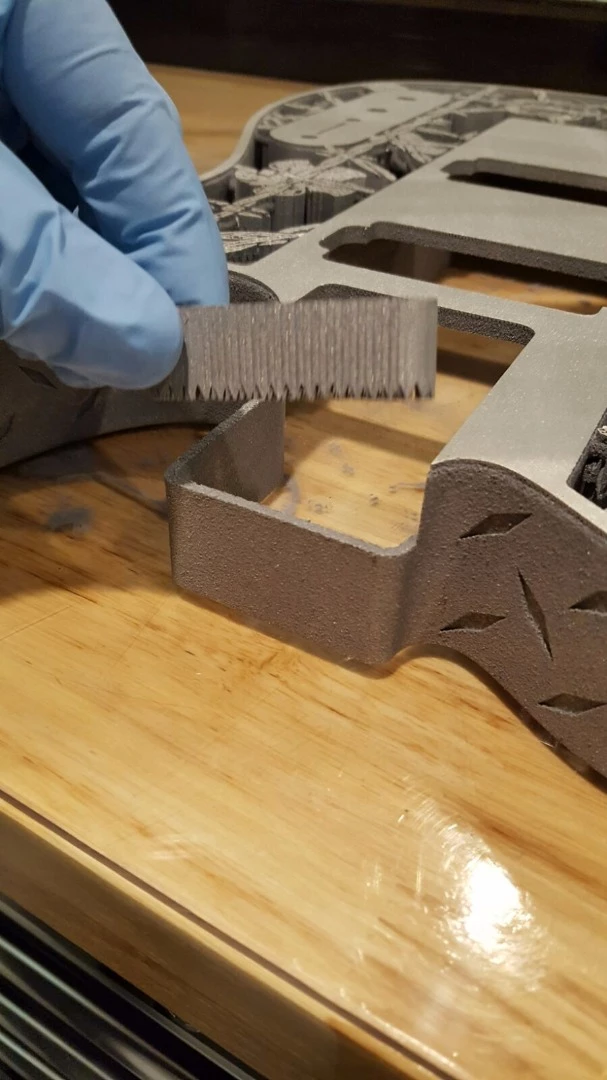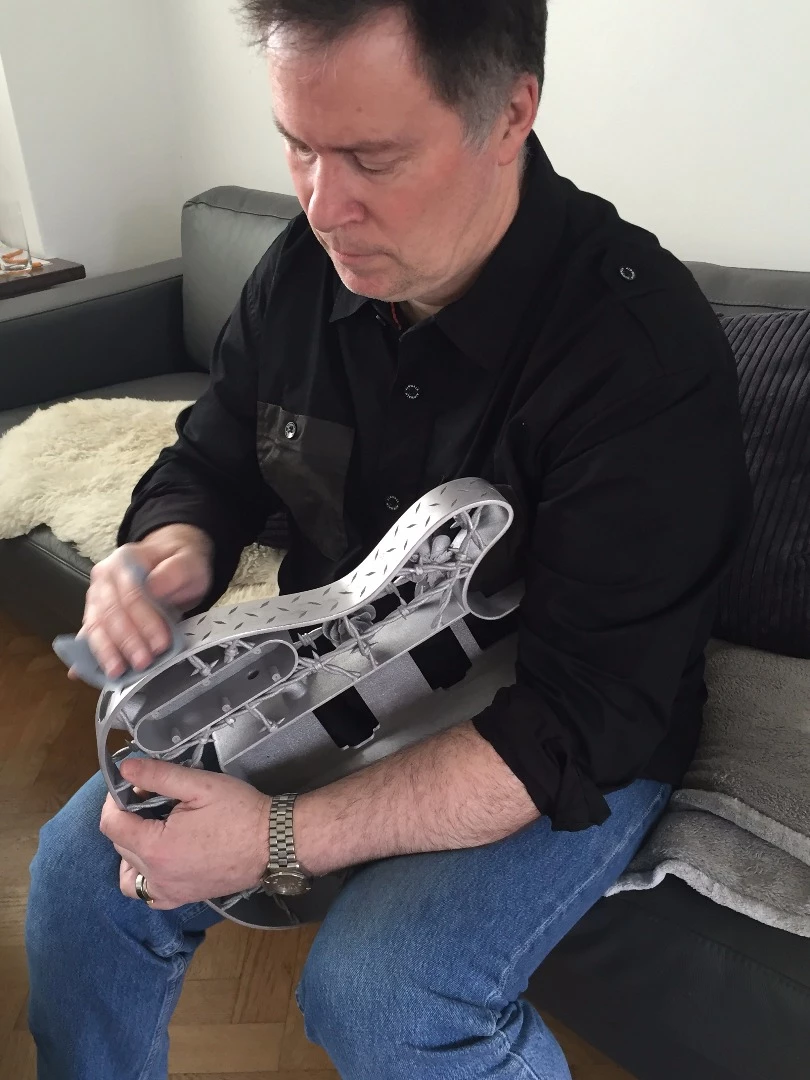We've been caught in Lund University professor Olaf Diegel's creative web ever since first covering the 3D-printed Spider electric guitar back in 2012. Since then, he's kitted out a live rock band and dabbled in smooth jazz with the help of a printed saxophone. Now he's discovered Heavy Metal with what's billed as the world's first 3D-printed aluminum guitar.
The Heavy Metal guitar has been designed to fully test the capabilities of metal additive manufacturing. Diegel opted to make his first foray into metal additive manufacturing a complex piece, designing a Telecaster-shaped body that's home to barbed wire front and back, with the barbs facing away from the player so as not to cause harm, and metal rose blooms inside the barbed cage.
The aluminum body was printed as a single piece by Dutch additive manufacturing company Xilloc using an EOS M400 machine, where a laser is used to trace each layer of the 3D model into aluminum powder, melting the powder at the strike points to slowly build up the shape and design. The metal body came out of the machine with structural supports in place and was stuck fast to the base plate.

The first step of the finishing process was to separate the guitar from the base plate using a saw. Diegel then removed all of the support material by hand, which took around four days. The surfaces of the guitar were still pretty rough at this point, and needed smoothing out. Again, Diegel opted for the personal touch and after another three or four days of intense filing and sanding, the aluminum body was ready to be wrapped around an inner maple core.
Completing the Heavy Metal guitar are a 22-fret custom Warmoth Pro Telecaster neck topped by a maple fingerboard, Seymour Duncan pickups (Jazz SH2 at the neck and JB SH4 at the bridge), Schaller bridge and Gotoh tuners. The finished instrument tips the scales at 3.7 kg (8.1 lb), only a little weightier than an American Standard Telecaster, so not that heavy after all.
Source: ODD Guitars


